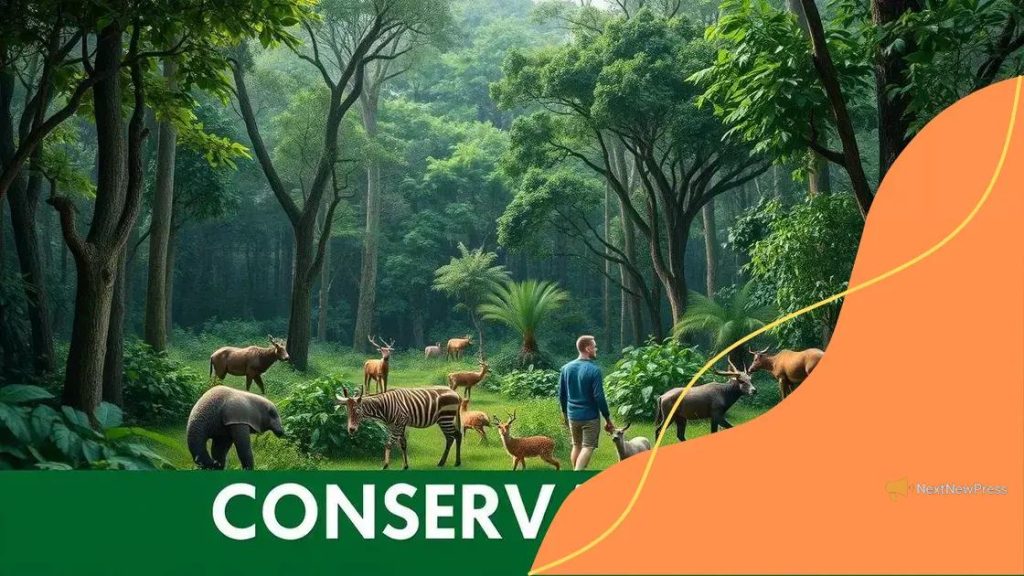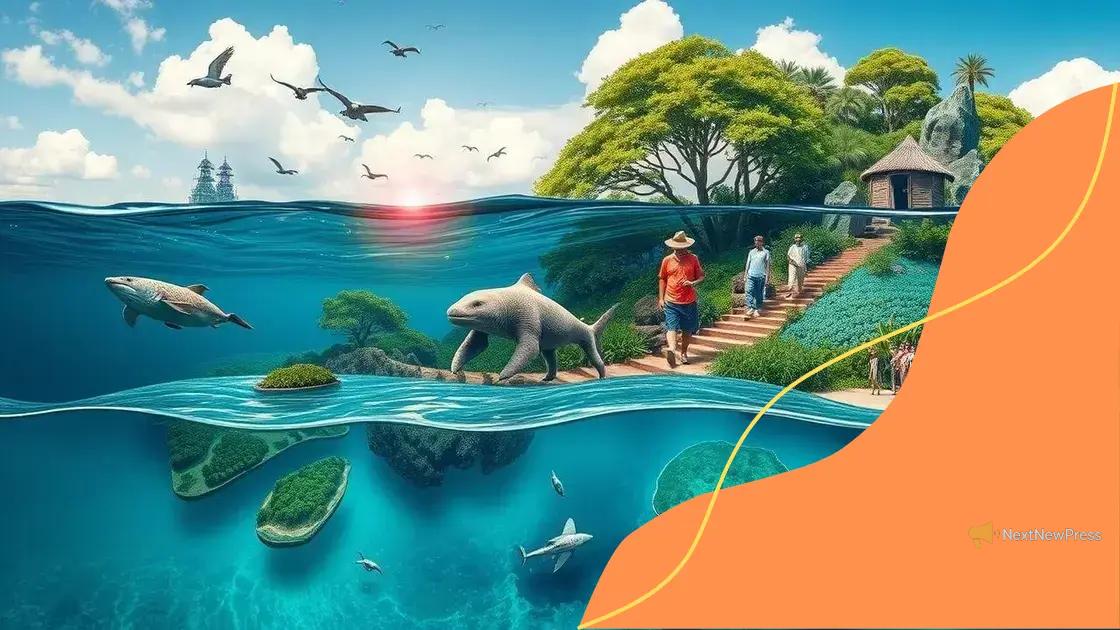Debates surrounding environmental conservation efforts

Debates surrounding environmental conservation efforts focus on key challenges like funding, political obstacles, and the role of technology, while emphasizing community engagement and successful case studies to enhance conservation strategies.
Debates surrounding environmental conservation efforts are becoming increasingly crucial as we face pressing ecological challenges. How can we balance development with sustainability? Let’s dive into this important discourse.
The history of conservation efforts
The history of conservation efforts dates back hundreds of years, evolving as societies recognized the importance of preserving natural resources. Understanding this history helps us appreciate the progress made and the challenges that still lie ahead.
In the late 19th and early 20th centuries, individuals like John Muir and Theodore Roosevelt played pivotal roles in shaping conservation policies. Their dedication led to the establishment of national parks, which aimed to protect the beauty and biodiversity of specific areas.
Key Milestones in Conservation
As the movement grew, several key milestones marked significant advancements:
- The establishment of the first national park, Yellowstone National Park, in 1872.
- The creation of the U.S. Forest Service in 1905.
- Introduction of the Endangered Species Act in 1973.
- The formation of organizations like the World Wildlife Fund in 1961.
These milestones illustrate how conservation efforts have been institutionalized over time. Awareness campaigns have also sprung up, emphasizing the need to conserve endangered species and habitats. For example, the iconic image of a bald eagle in the U.S. symbolizes the success of conservation initiatives.
The Role of Legislation
Legislation has been crucial in shaping environmental conservation. Regulations such as the Clean Air Act and the Clean Water Act have provided vital protections. Additionally, international agreements like the Paris Agreement highlight the global endeavor to address climate change.
These legislative frameworks are supported by grassroots movements that advocate for environmental stewardship. Communities around the world are now participating in local conservation projects, leading to improved environmental practices.
As we look back at the history of conservation efforts, it becomes clear that the journey is ongoing. Modern challenges, including climate change and habitat loss, necessitate a renewed commitment to protecting our planet. Understanding our past is essential for shaping future strategies for conservation.
Key environmental issues at stake
Several key environmental issues at stake affect our planet today. Understanding these issues is crucial for taking informed action toward conservation and sustainability.
One major concern is climate change, which results primarily from human activities such as burning fossil fuels. Increased greenhouse gas emissions are driving global temperatures higher, leading to severe weather events and rising sea levels.
Impact of Climate Change
The consequences of climate change are profound:
- Extreme weather conditions cause destruction.
- Melting ice caps threaten coastal communities.
- Many species face extinction as their habitats change.
- Food and water resources become more scarce.
Another pressing issue is the loss of biodiversity. Human actions like deforestation, pollution, and urbanization significantly disrupt ecosystems. This loss not only endangers wildlife but also affects human survival by diminishing essential resources.
Pollution’s Role in Environmental Crises
Pollution is another central problem that contributes to environmental degradation:
- Air pollution affects health and contributes to climate change.
- Water pollution compromises drinking supplies and aquatic life.
- Plastic waste causes harm to marine animals and ecosystems.
- Soil contamination affects food production and ecosystems.
The depletion of natural resources, including water and forests, is equally concerning. Overconsumption and mismanagement intensify these issues, leading to conflicts over resources and reduced quality of life for many communities worldwide.
Addressing these key environmental issues at stake requires collective effort, innovative solutions, and a commitment to sustainable practices. By raising awareness and advocating for changes, we can all contribute to a healthier planet.
Successful case studies in conservation

Looking at successful case studies in conservation reveals effective strategies and practices that have made a positive difference in protecting our planet’s ecosystems. These examples inspire action and provide a roadmap for future efforts.
One prominent success story is the recovery of the brown pelican in the United States. Once on the brink of extinction due to pesticide use, dedicated conservation efforts led to the banning of harmful chemicals like DDT. Through habitat protection and regulation, the brown pelican population rebounded, showcasing the power of active intervention.
Community-Led Conservation
Another inspiring case involves local communities taking charge of conservation initiatives:
- The Campfire Program in Zimbabwe empowers communities to manage wildlife sustainably.
- In Costa Rica, ecotourism has become a tool for environmental preservation.
- Indigenous communities worldwide are stewarding their lands, ensuring biodiversity.
- The Great Green Wall project across Africa aims to combat desertification.
These examples show that when communities engage in conservation, the results can be remarkable. They foster a sense of ownership and responsibility towards the environment while providing economic incentives for protecting natural resources.
Marine Conservation Triumphs
Marine conservation also has several successful initiatives worth noting. The establishment of marine protected areas (MPAs) has proven effective in restoring fish populations and biodiversity:
- The Chagos Archipelago in the Indian Ocean is now a no-take marine reserve, leading to thriving marine ecosystems.
- The Great Barrier Reef has seen initiatives aimed at coral restoration and pollution reduction.
- Community-led efforts in the Caribbean to reduce plastic use have helped protect critical habitats.
- Innovative practices like aquaculture provide sustainable seafood while reducing fishing pressure.
These successful case studies in conservation illustrate that effective strategies often involve collaboration between various stakeholders. By learning from these successes, we can guide future conservation efforts and address ongoing environmental challenges.
Challenges faced by conservation advocates
Conservation advocates face numerous challenges in their quest to protect the environment. Understanding these obstacles is vital for developing effective strategies to overcome them.
One significant challenge is the issue of funding. Many conservation projects rely heavily on donations and grants, and securing consistent funding can be difficult. This often limits the scope of programs and hinders long-term success.
Political and Social Obstacles
Political factors also pose serious barriers. Changes in government policy can lead to reduced support for conservation initiatives. Sometimes, new regulations favor industry over environmental protection:
- Industrial interests can overshadow conservation efforts.
- Local communities may be resistant to changes due to economic concerns.
- Displacement of indigenous populations affects conservation efforts.
- Lack of awareness about environmental issues hampers advocacy.
These political and social dynamics complicate the work of conservationists. They must navigate complex relationships and advocate for policies that benefit both the environment and local communities.
Environmental Issues and Climate Change
Additionally, ongoing environmental issues create further challenges. Climate change dramatically affects ecosystems, making it harder for conservation efforts to keep pace:
- Species migration disrupts existing conservation plans.
- Extreme weather events damage habitats and create urgent needs for recovery.
- Increased pollution levels can endanger wildlife and plant life.
- Invasive species can outcompete native species, complicating preservation efforts.
With rising global temperatures and changing weather patterns, conservation advocates must continually adapt their strategies. The fight against climate change requires innovative and flexible approaches to maintain biodiversity.
Despite these challenges faced by conservation advocates, many continue to persevere. Their efforts are critical for ensuring a sustainable future and protecting our planet’s invaluable resources.
The role of technology in conservation
Technology plays a vital role in modern conservation efforts. It helps scientists and advocates understand ecosystems better and create effective strategies to protect them. Today, we will explore how different technologies enhance conservation.
One major technology advancing conservation is remote sensing. This method uses satellites and drones to monitor environmental changes. By collecting data from the sky, conservationists can track deforestation, habitat loss, and wildlife movements in real time.
Innovative Tools for Wildlife Protection
Another area where technology shines is in protecting wildlife:
- Camera traps provide insights into species’ behavior and populations.
- GPS collars track animal movements and migratory patterns.
- Acoustic monitors detect sounds from endangered species.
- Biometric technologies can identify individual animals for better tracking.
These tools enable researchers to gather detailed information about biodiversity and ecological health. Understanding how animals interact with their environment is crucial for effective conservation planning.
Community Involvement through Apps
Technology also empowers communities in conservation. Mobile applications are becoming popular tools for engaging the public:
- Apps allow users to report sightings of wildlife, helping track populations.
- Citizen science platforms encourage community participation in data collection.
- Social media raises awareness about conservation issues and mobilizes support.
- Virtual reality experiences can immerse people in natural environments, emphasizing the need for conservation.
These innovations foster a collective effort to protect our planet. As communities engage with technology, they become more invested in conservation initiatives.
Overall, the role of technology in conservation is expanding and evolving. By embracing new tools and methods, conservationists can enhance their efforts, protect endangered species, and ensure that future generations inherit a healthy planet.
In conclusion, addressing environmental issues is crucial for a sustainable future. By understanding the challenges faced by conservation advocates and harnessing the power of technology, we can make significant strides in protecting our planet. Successful case studies in conservation demonstrate what can be achieved when communities and organizations work together. As individuals, we all have a role to play in supporting these efforts. Whether through advocacy, education, or personal action, each contribution matters. Together, we can ensure a healthier environment for generations to come.
FAQ – Frequently Asked Questions about Environmental Conservation
What are the main challenges facing conservation advocates?
Conservation advocates face challenges like funding difficulties, political obstacles, and the impacts of climate change on ecosystems.
How does technology aid in conservation efforts?
Technology aids conservation through remote sensing, GPS tracking of wildlife, and mobile apps that encourage community engagement.
Can you give an example of a successful conservation case?
The recovery of the brown pelican in the United States showcases successful conservation efforts after banning harmful pesticides.
Why is community engagement important in conservation?
Community engagement is crucial as it fosters local involvement, raises awareness, and builds a sense of ownership over natural resources.





